Ice covers almost 15 million square kilometers of Earth’s land surface. That’s a lot of land! It helps keep Earth’s climate in balance (not too hot and not too cold). And it keeps Earth’s oceans at the levels we’ve come to expect (not too high and not too low). In other words, Earth’s ice is important to all living things.
So last summer, I decided to go check out some ice. I hopped on a plane to Iceland, then into a rental car, then into a 4-wheel drive jeep, then onto a skidoo to visit the Vatnajokull ice cap. It was AMAZING!
Once you get up into the mountains, you see the ENORMOUS field of ice – very beautiful, very windy and cold, and VERY BRIGHT. Check out the video I took while on the top…. (Sorry about all the noise in the video. It’s very windy on an ice cap on top of a mountain!)
That very white ice reflects the sun’s rays. The sun’s heat bounces back into the atmosphere, rather than being absorbed by the earth. That helps keep the planet from getting too warm.
You can see this for yourself by shining a light toward hard-packed snow, and then shining a light toward a dark surface (such as black construction paper). See how the light is reflected off the snow, but not reflected off the darker surface?
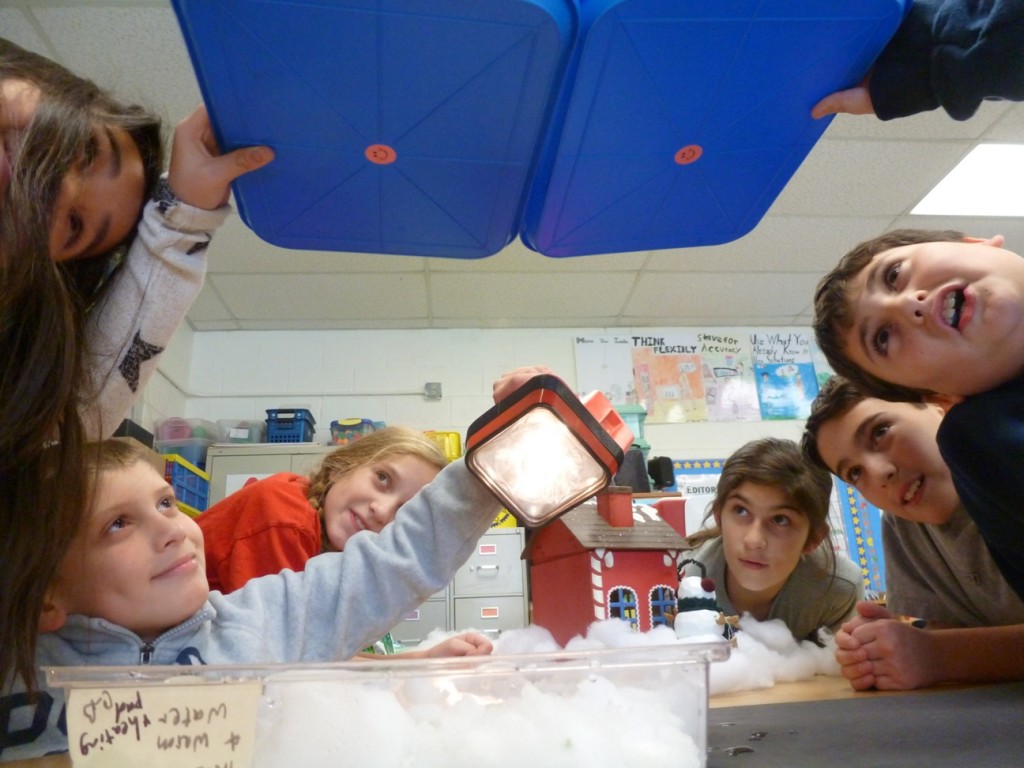
When the classroom light is turned off, the students see the light of the flashlight reflect off the snow and shine on the bottom of the trays.
While in Iceland, I also flew over the Vatnajokull ice cap to get a bird’s-eye-view.
From the air, you begin to understand the enormous size of this sheet of ice.
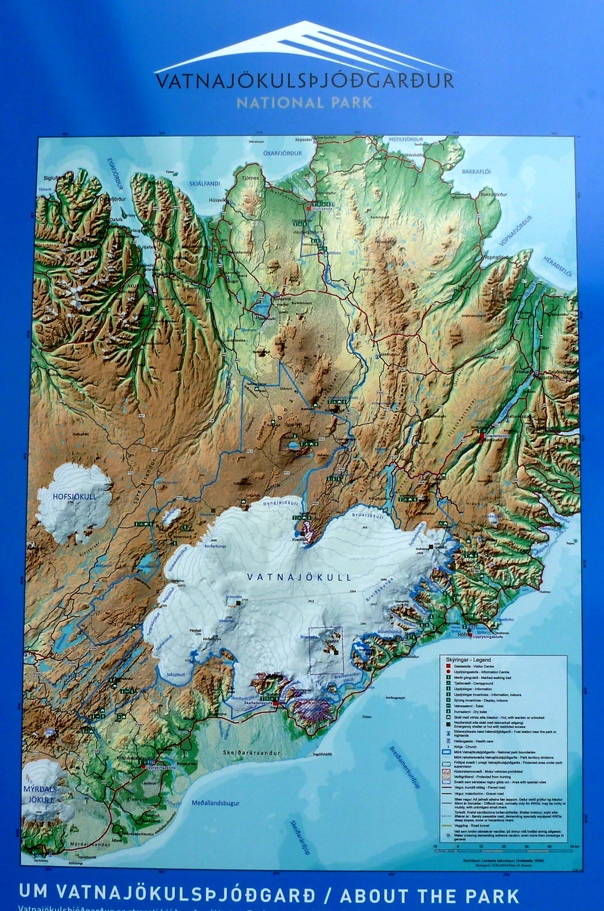
Here’s a model of the Vatnajokull ice cap in Iceland to help you understand it. You can see it covers a large part of the southeast portion of the country.
The problem is that the ice is melting. Scientists have evidence that Earth’s ice is melting. Global warming is the cause. Air pollution causes the world’s temperatures to rise. The warmer temperatures melt the ice.
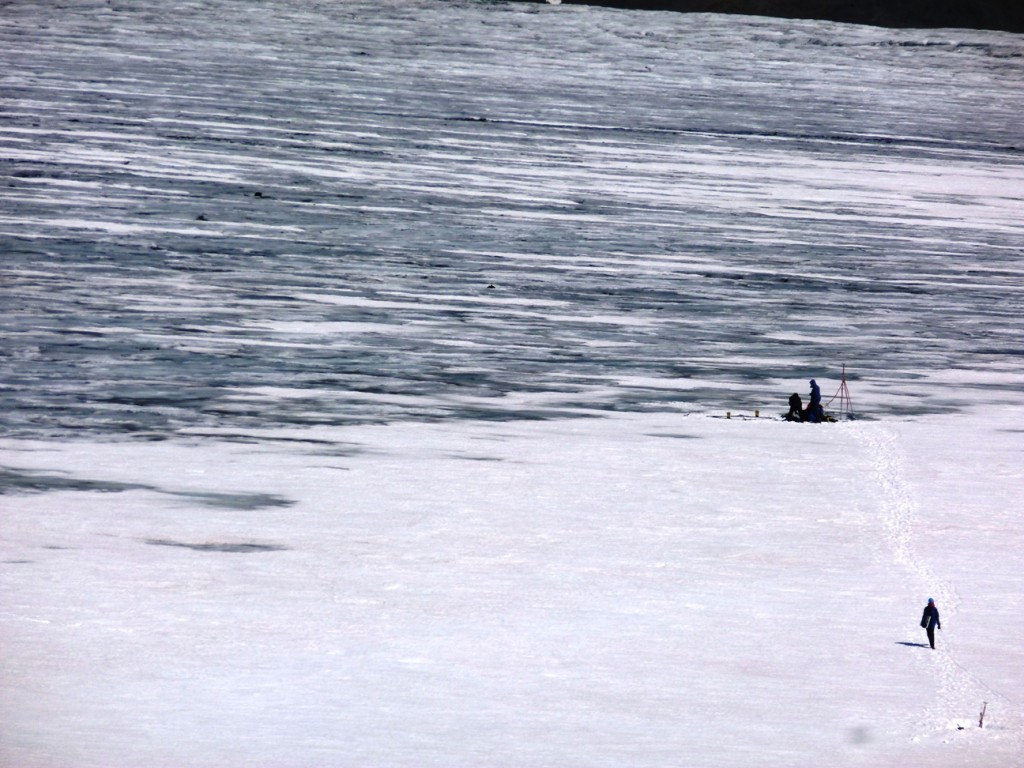
Here I saw scientists measuring the thickness of the ice by drilling down into the ice cap. The black you see in my photo is volcanic ash that has mixed with the ice.
The more Earth’s ice melts, the more heat our planet absorbs from the sun. (Apologies again for the wind noise.)
The less white ice we have to reflect the heat, the more Earth heats up. You can see where this is going, can’t you? Heating→ Melting → Heating→ Melting→Heating→ Melting→……
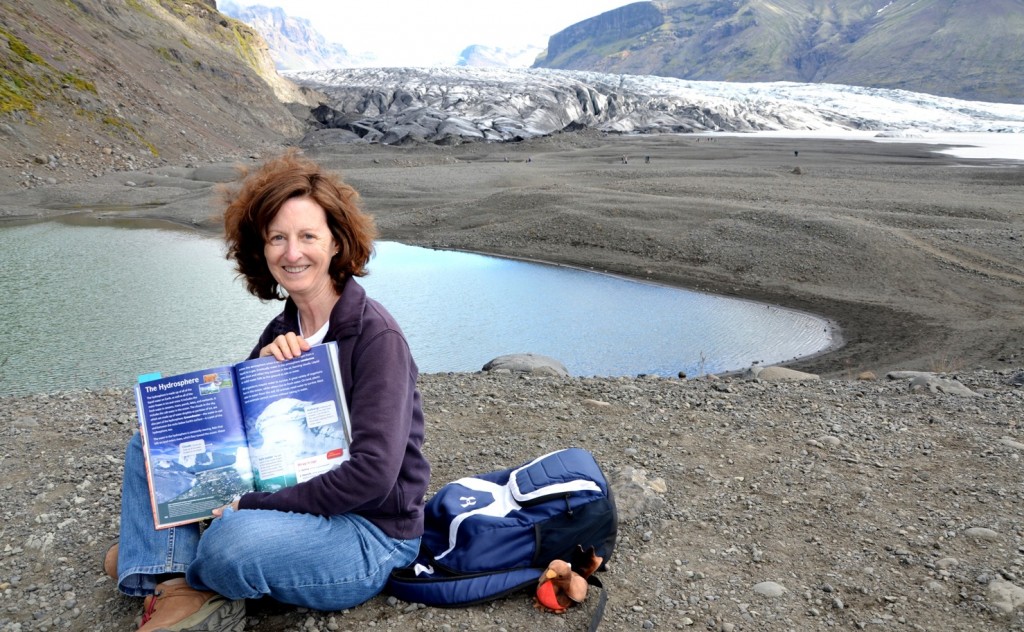
Chirpy and I are sitting in a glacial moraine. This area used to be covered by the glacier you see in the background. It’s melting away, leaving grey rocks to absorb the sun’s heat. (No, I’m not having a bad hair day. It was very windy.)
We need Earth’s ice to keep our planet’s temperatures close to what they are now. All living things depend on Earth’s ice.
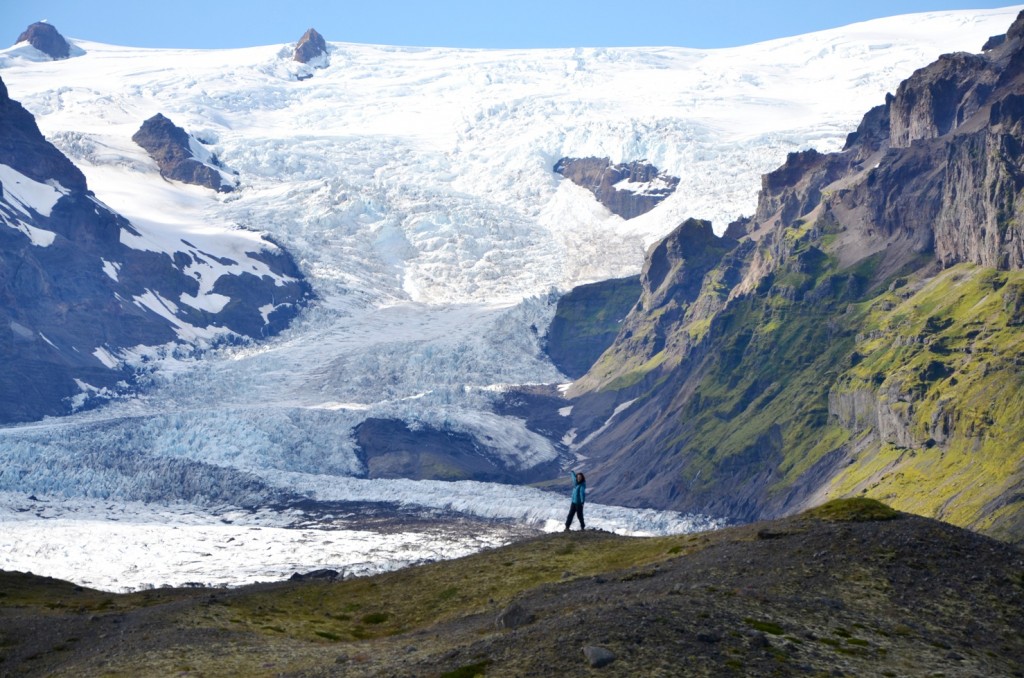
Here’s another area where the glacier used to be much thicker, and cover a much larger area. All the ground you see, including the ground I’m standing on, had been covered by the glacier for thousands of years.
It’s important that we do what we can to reduce the amount of pollution we put in the air. When we reduce air pollution, we slow down global warming. That will slow down the melting of Earth’s ice. For ideas on ways you can help, click here.
At a recent science conference for teachers, a glaciologist showed us an ice core he collected from Antarctica. An engineer invented the drill that allowed the scientist to drill deep down to gather ice from thousands of years ago.
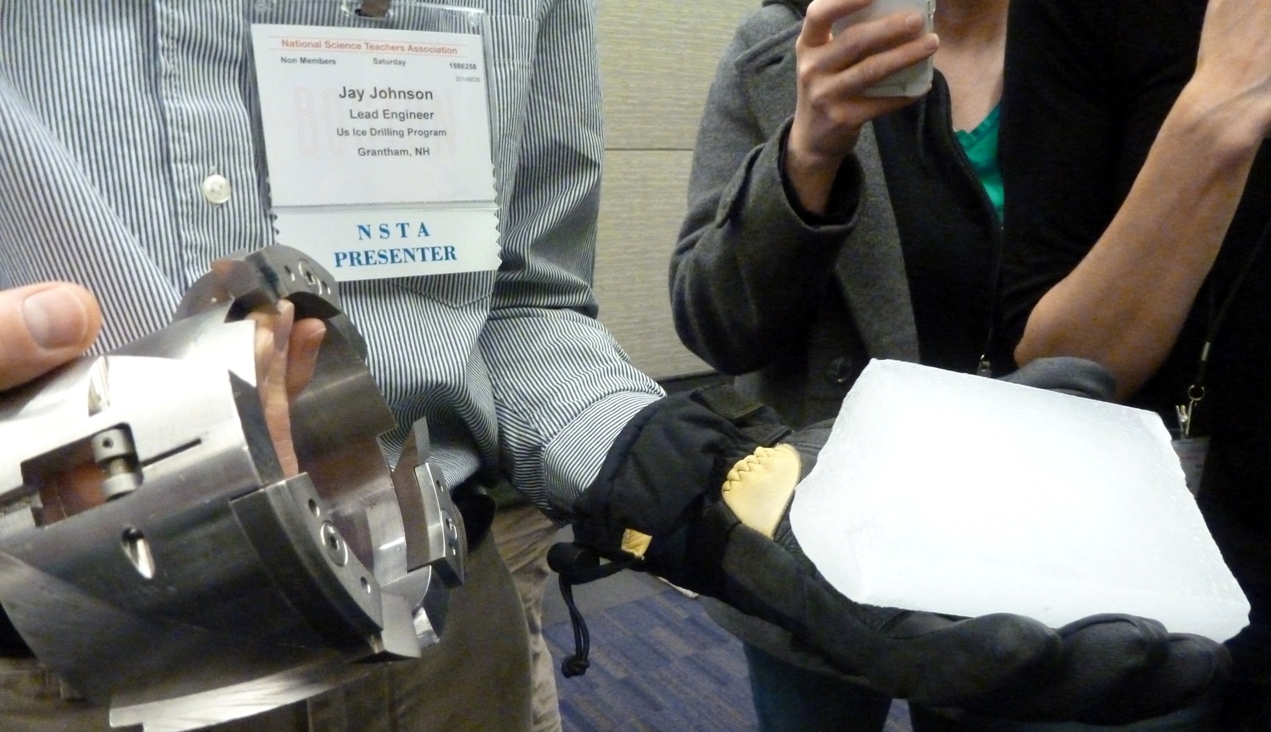
An engineer from the United States Ice Drilling Program shows us part of the drill that was used to capture the core of ice.

Here’s a close-up picture of the piece of ice core all the way from Antarctica!
Can you see the bubbles in the ice core? What do you think caused these bubbles? What important information do they hold?
Click here for more information on ice cores.

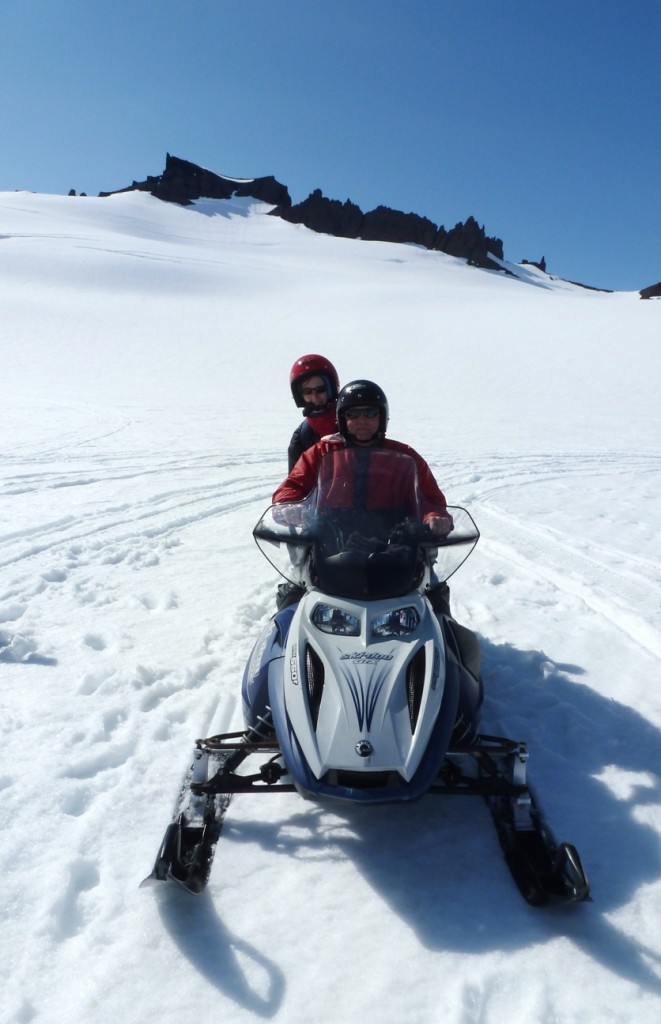
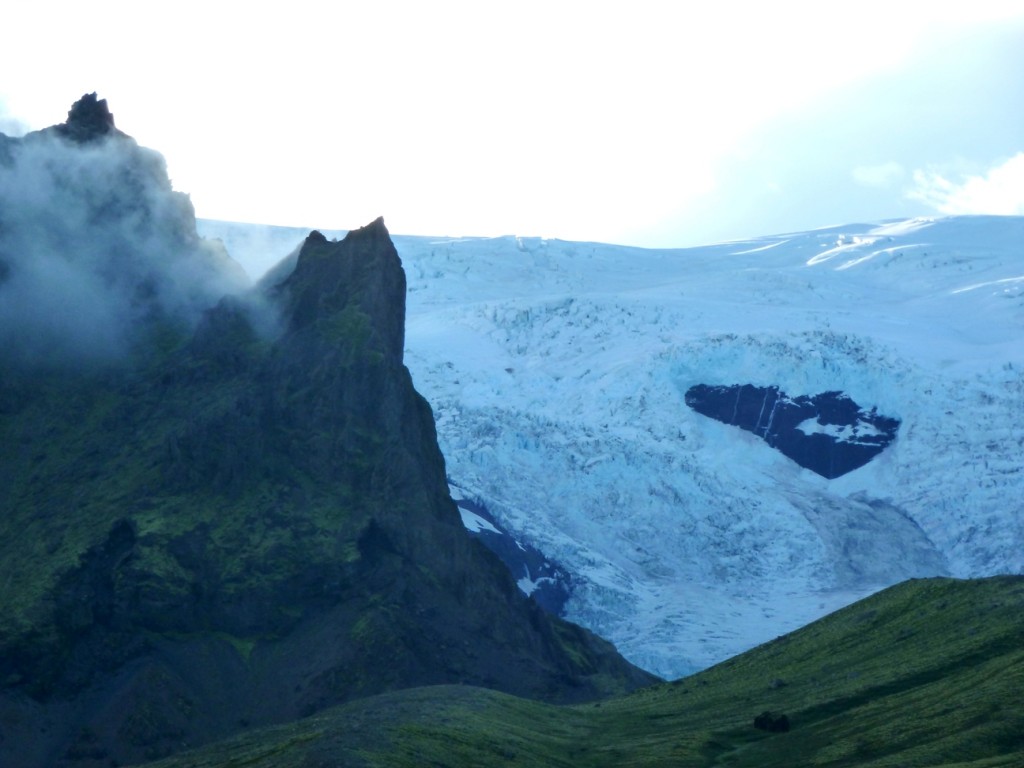

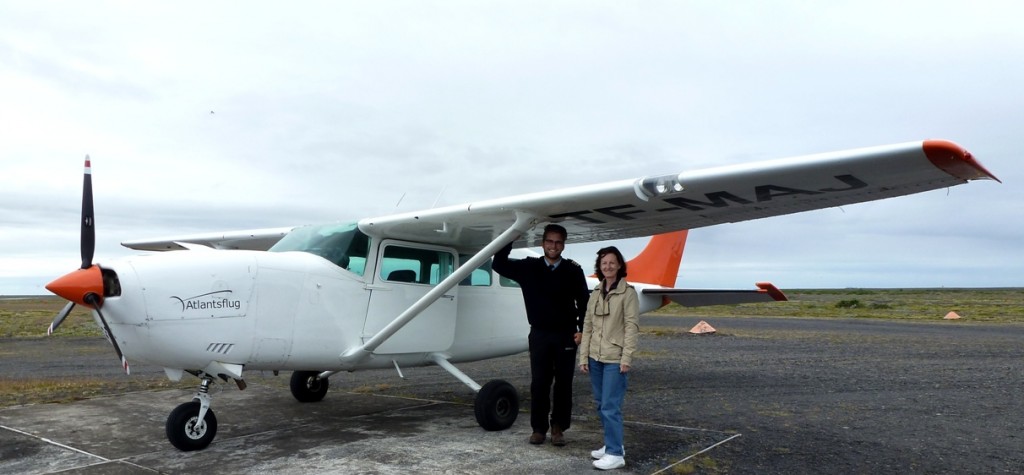

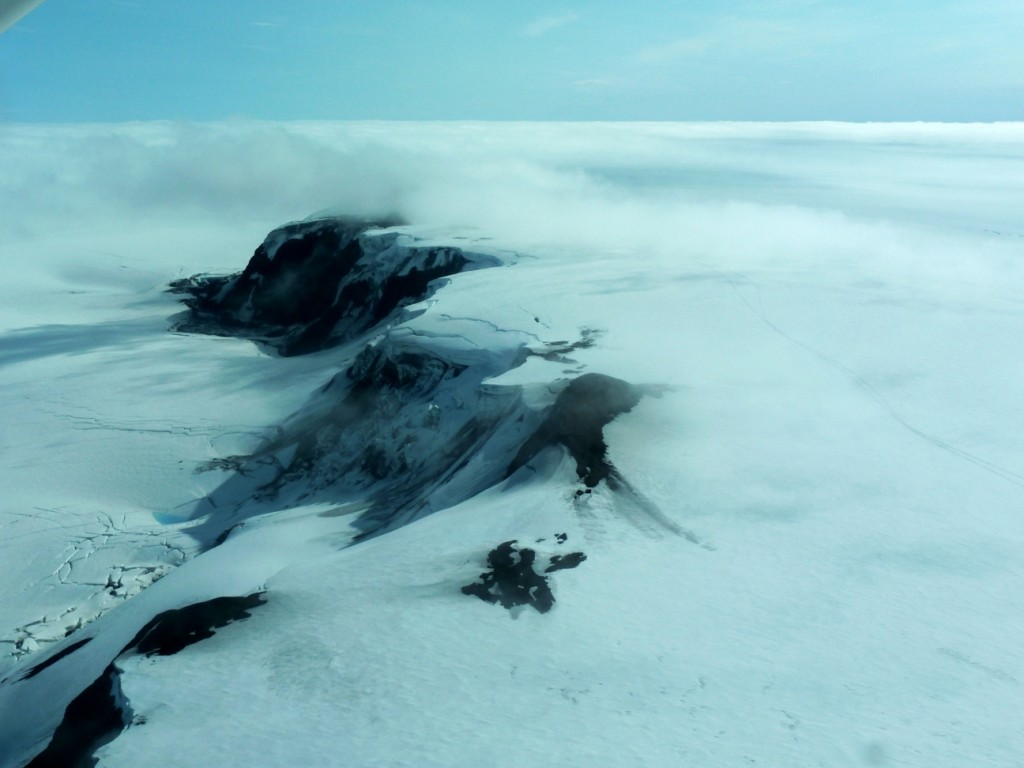
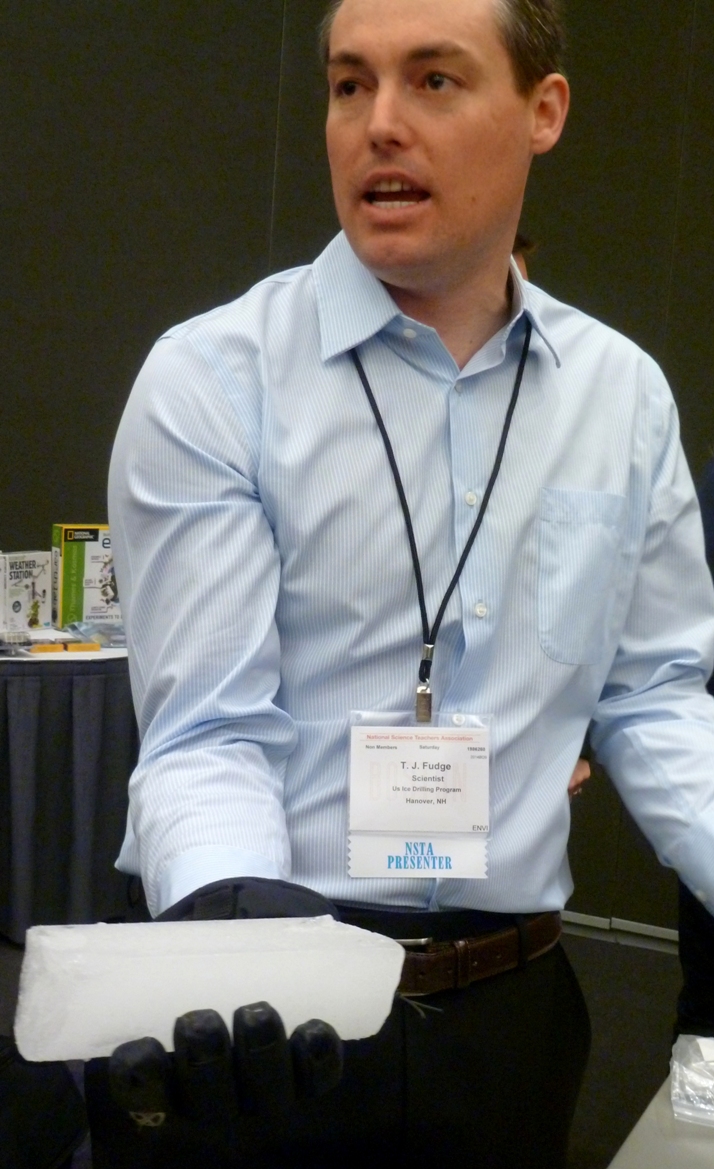
i learnt that on ice caps in iceland is very windy and cold.I know this because I inferred in the video what it would be like.
Wow since i that scale wow those ice caps where really BIG I will love to go there becuse it really awesome there 🙂
I never knew that glaciers can get that huge!
I think it is so amazing that the ice is THAT big. I never knew they were that big, even if they can be a whole mile thick.
It must be very interesting to be a glaciologist and study ice. There is probably a lot to do right now with global warming melting glaciers. I would like to go to Iceland to see all of the glaciers and other natural land forms.
It is interesting and worrying to see the ice-caps melt. Since the ice-caps are melting because of global warming, we have to slow down global warming before we can try to stop the ice-caps melting.
I never knew that ice could be around during the summer in Iceland.
The ice is so cool! Was it cool to see? It is ashame that global warming is melting the ice. 🙁
If ice on earth melts not only does it cause the Earth to get warmer and melt more ice but it will raise sea levels flooding coastal areas and small islands.
It must have been so cool and interesting for you to get to see all of the ice and how global warming is affecting it when it melts it. I found it very interesting that you got to sit on a glacial moraine, which had melted away and still is, leaving gray rocks to absorb the sun’s heat. I would love to visit one day and see all of the amazing sites that you got see.
I think that from the many modles we have done we need to stop goble warming. Our earth is warming and we need to stop so the people in the future have a good life.
This is so cool because i never knew ICE covers 15millon part of the
earth.
Awesome i didn’t know climate change was melting glacers that much im going to tell people to stop polluting that much.
Global warming must be very powerful to melt those icecaps.
Wow Ms.christie-Blick that must have been cool. I never knew that glaciers were so big and long that u can even go skidooing on it. That glacier must be really thick too. I also think it is really cool that the ice cores can detect the weather back in the past. That is amazing how you can do that with just a long piece of ice.
it looked verry cold but it also looks very intresting
I never knew the size that a icecap could get! P.S the bubbles are caused by co2 and other gases.
This is so interesting I never thought ice could be so big! We should stop polluting the air and try to help!
I think that ice cave was very interesting I loved how the water dripped
from the top of the ice cave it was so pretty.
The air bubbles in the ice core can tell how much of multiple gas was in the air at a certain time. I think it is very cool that the glacier was so big, but it is really sad that it is melting because of global warming.
When I saw the model of Vatnajokulspjodgadur it was really surprising to see what global warming did to all that ice because on the model it showed a little amount of ice and alot of the model showed land. I know that there used to be more ice on the land but global warming has melted most of it.
it is very intresting how ice can reflect heat wave to cool down the earth
About how long did it take to ride the glacier? I wonder if my brother would like a trip here.
Wow, it looks like you had a fun time. But why is the earth melting everyday? It was really cool that when you shine the light on the ice that it will show your reflection. Thats what I thought was fasanating about ice on earth!
I have a question/comment. If ice keeps the oceans levels in balance then why is the ocean rising so much if the ice is melting so little? Also what would be a good/hard experiment to see what would happen and how quickly the ocean would rise without icecaps or glaciers.
There’s a lot of ice melting each year. It adds up to quite a bit of water. It is difficult to assess how much the ocean would rise if all the ice on Earth were to melt. However, scientists and mathematicians have worked it out mathematically and created computer models of it. The ocean also rises because warm water takes up more room than cool water. That’s because water molecules (two hydrogen molecules and one oxygen)move farther apart when they warm up.
Wow Chirpy, you must have had a really fun time! It looks very exciting in Iceland. Before you got to the ice cap what were you expecting? Was it just as you expected or was it much different? I know that I certainly wasn’t expecting it to be that big.
I agree with ruby being in iceland seems very cool but its way too cool for me 🙂 .
get it COOL